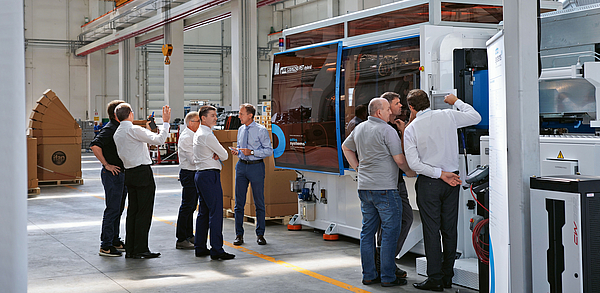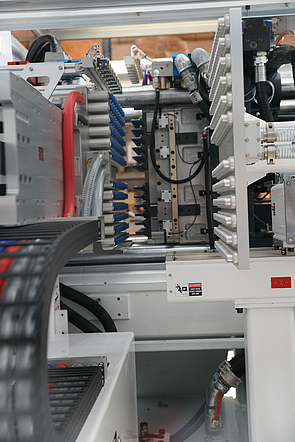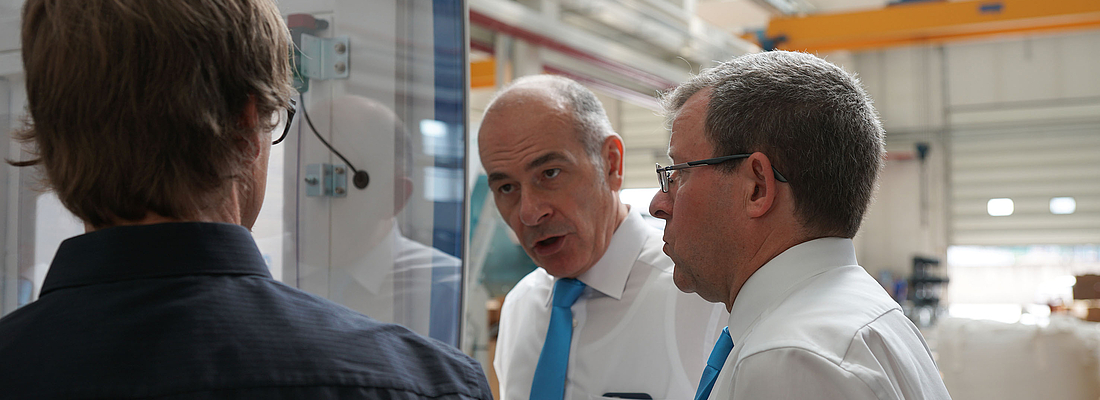

There is a new name in preform systems: Otto Systems.
Otto Systems was founded in March 2017 in Uznach, Switzerland, as a consultancy and engineering company offering custom turnkey solutions for preform production. A joint venture between Yudo Inc. and Otto Hofstetter AG, Otto Systems has a global presence and aims to bring together the best of both worlds in order to offer customers something innovative, unique and specific:
preform systems à la carte.
Introducing the first Otto Systems preform system featuring a BMB injection unit
Otto Systems and its first 96-cavity system were presented to a small circle of customers at two events in July 2017. The system is equipped with an Otto Hofstetter mould, a Yudo robot and Piovan peripherals, and uses an injection moulding machine from BMB in Brescia, Italy.
The official launch of the joint venture between Otto Hofstetter AG and Yudo Inc. is just around the corner. Otto Systems AG is positioning itself as a consultancy and engineering company for PET preform systems. At PETnology, we were pleased to accept an invitation from the new company’s “founding fathers”. Once you’ve finished reading about our impressions of the event and taken a look at the overview of the system, be sure to check out our exclusive interview with Otto Hofstetter, Chairman of Otto Systems, and Stefan Zatti, CEO of Otto Systems AG. We spoke with them about what motivates them, the concept behind their business enterprise and the opportunities presented by the global PET preform market.
In welcoming visitors to the event, Mr Zatti discussed the challenges to success facing converters and fillers in the PET preform business. On the basis of the following statements, he then introduced Otto Systems and the company’s goals:
“Otto Systems is the answer to the markets’ growing desire for flexibility, versatility and independence.”
- State-of-the-art preform systems should be custom-made, not standard.
Because in today’s oversaturated markets, brands are looking for differentiation. As changing the product itself is difficult, the packaging offers an ideal playground for creative solutions. - When it comes to state-of-the-art preform systems, the focus should be on life-cycle costing, not initial investment.
Because as modern management is increasingly realising, it’s not the purchase price that is important, but the total cost of production over the life cycle of the product. - State-of-the-art preform systems should be characterised by simplicity, not complexity.
Because our business is already complex enough. As a consequence, people lose track of what they are doing and feel uncertain. By simplifying the business, we can improve certainty and confidence. - When it comes to state-of-the-art preform systems, we should talk about the optimum and not the maximum.
Because in today’s climate of cost pressure, no one can afford a maximum solution. Instead, improving efficiency in every area is key.
As Mr Zatti explained, the careful analysis of the market situation described here formed the basis of the decision to found Otto Systems, so that in the future, customers would no longer need to compromise on their desires. Customers and experts had the opportunity to take a close look at the concept in action during ongoing operations in a BMB production hall in Brescia, before enjoying a discussion over lunch in a cosy Italian-Mediterranean atmosphere. Afterwards BMB VP Marco Bugatti took visitors on a tour of the factory, and BMB’s expertise in building injection moulding machines for the packaging, automotive and PET sectors became tangible.

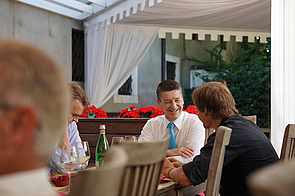
The Concept - No compromises
No compromises. Figure 1 shows Otto Systems’ approach to achieving this aim. For customers, the preform is their product and, as such, its specific requirements are a top priority. Otto Systems initially advises customers on preform design, mould concept and potential preform systems. Then the system is implemented as a customer-specific solution. Customers have a free choice of injection units and peripheral devices such as dryers, dehumidifiers and chillers.
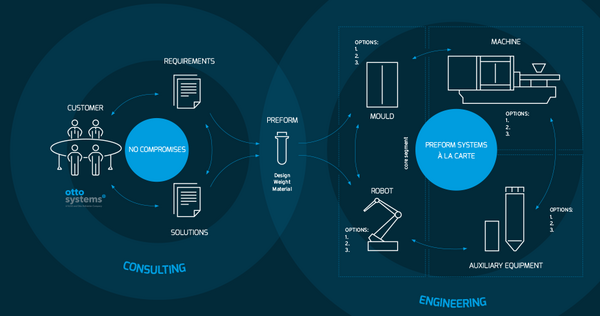
The first system:
The first system produced by Otto Systems and presented in Brescia comprises the following units with the following key features and production data:
- 8g preform
- Mould & robot: Otto Systems
- Machine: BMB
- Peripherals: Piovan
Preform and production:
An 8 g preform with a 29/25 neck and a cycle time of 5.3 seconds is produced. With the 96-cavity mould, this results in a production output of 65,200 preforms and a throughput of 522 kg of PET per hour.
The mould:
96-cavity Otto Hofstetter mould
The 96-cavity mould has the following key technical data:
- cavity lock
- 50 x 84 mm pitch
- OH Xtra® for surface optimisation (average roughness values (Ra) of 0.05–0.1 µm).
- OH XCool® for optimum cooling performance
The BMB machine
The BMBeKW320 PET Hybrid-6250 injection moulding machine has the following key technical data:
- Clamping force: 3,200 kN
- Distance between the tie bars: 730 x 730 mm
- Mould height max.: 950 mm
- Plasticising screw diameter: 140 mm
- Plasticising capacity: 1,150 kg/h
- Stroke volume of shooting pot: 6,900 cm3
- Hot runner controller unit: Yudo
- Electrical clamping and plasticising screwdrivers
- Hydraulic ejection and shooting pot
The robot:
The Yudo Suns ZiPET1520 robot is a side entry system with two EOAT cooling positions and two cooling positions on the cooling block. The key technical data are as follows:
|
Peripherals:
The following Piovan equipment was installed in this demo system:
- Dryer: Genesys GMP350 adaptive series, max throughput 1,150 kg/
- Mould dehumidifier: RPA 290
- CW PET chiller unit
The interview
The joint venture established by Otto Hofstetter AG and Yudo Inc. is about to be officially launched. Otto Systems AG is positioning itself as a consultancy and engineering company for PET preform systems. ComPETence spoke with two of the founders of the new company. In this interview, Otto Hofstetter, Chairman of Otto Systems, and Stefan Zatti, CEO of Otto Systems AG, talk about what motivates them, the concept behind their business enterprise and the opportunities presented by the global PET preform market. With its innovative service, Otto Systems offers three key advantages: an unwavering focus on its clients’ needs, a free choice of system components and an emphasis on working together with others as equal partners in order to find solutions.
What was it about the PET packaging market which prompted you to establish Otto Systems?
Hofstetter: We decided to found Otto Systems for two reasons. Firstly, in response to developments in the market and secondly, so that we could change the strategic direction of Otto Hofstetter AG. We must make a clear distinction between Otto Hofstetter AG as a mould manufacturer and Otto Systems AG as our new consultancy and engineering firm. They are two independent companies.
It goes without saying, however, that the new company will profit from more than 40 years of experience in PET preform mould making, since its core team comprises staff who are known on the market from Otto Hofstetter AG.
Our partner Yudo also brings fresh ideas to the table. Otto Systems AG finds solutions to the challenges created by changes in the global preform market. Current developments in this sector require companies to offer greater flexibility, customisation and efficiency.
On top of this, manufacturers are turning their attention towards lifecycle costing more than ever before. Meeting these new demands necessitates an innovative concept. Since Otto Systems works in direct contact with its clients and talks to them about their system requirements, clients benefit greatly from our experts’ wealth of experience. Our approach enables us to create the optimum system for each individual requirement.
Thinking about the entire process, you could say that the preform first comes into contact with the mould followed by the robot. So, based on this, could it be argued that mould manufacturers have closer contact with the product, i.e. the preform, than machine suppliers?
Zatti: We’ve never known it to be any other way. Whenever we talk to our clients, the preform is always at the heart of the conversation. The moulds, machines or peripherals don’t come into it. Instead, in the majority of cases, emphasis is placed on the preform or bottle. Our clients want to talk about lightweighting or, for example, about designing one universal preform from three preforms for different bottles.
At the start of any given project, we are therefore required to draw on the exact core skills we have developed over 40 years of making moulds and designing preforms. We’ve always had a lot of our own ideas in this area as have our clients. There have been situations in the past where our clients have said to us that it would be better if we could supply them with the machine as well, because then everything could get up and running more quickly. And that’s exactly my point – we are experts in moulds and in take-out stations. Our clients would have welcomed the opportunity to procure the entire system from us and the number of enquiries we have received to this effect has increased significantly in recent years. Ultimately, this is one of the factors which motivated us to take our next step.
Do you also think that you benefit from the fact that clients prefer discussing specific ideas with mould makers as opposed to with machine suppliers?
Hofstetter: Yes, I believe that we benefit from this. This becomes especially apparent to us when aspects relating to the technology or engineering behind mould-making have a direct impact on the product. This is because, in these cases, clients discuss matters in detail with the mould maker and not the machinery manufacturer. We work closely with our clients and always strive to find a technical solution.
Zatti: What’s more, I believe it’s fair to say that we’ve built up and maintained a network of contacts over more than 40 years. We’ve been working with our renowned partner for 30 years and we also learn a great deal from our packaging division. Here, every product reaches ever-greater heights in terms of customisation and distinctiveness. Today, many clients in this sector in particular consult a mould manufacturer first.
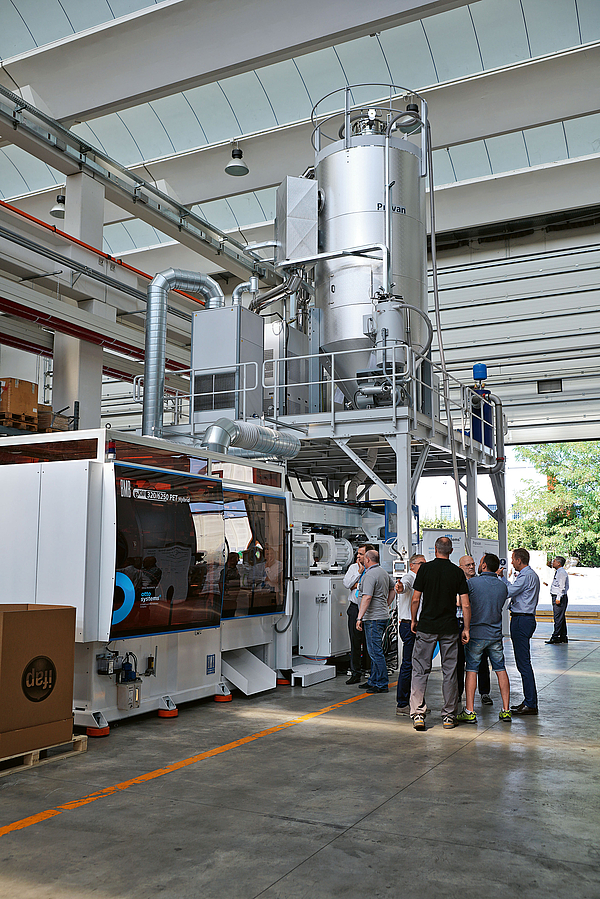
In terms of the market and its requirements, with Otto Systems, are you now in a position to offer services which were previously lacking?
Zatti: Yes, of course. There are cases where clients who procure and operate PET systems from the market leader see our moulds with side entry as advantageous and wish to use them. But unfortunately, they aren’t given this freedom of choice. A further gap in the market which we can fill with Otto Systems is the growing desire for flexibility, versatility and independence. These factors fall by the wayside at market-leading companies from which only the complete system, i.e. the machine plus mould, can be procured. This is how the current situation in the market has developed. There is the world of Netstal-Otto-Hofstetter and the world of Husky. We were motivated by the desire to actually give clients the freedom of choice they had allegedly been promised and to offer them the flexibility and independence they had previously been looking for in vain.
What are the main markets being tapped by Otto Systems?
Zatti: In essence, Otto Systems is a consultancy and engineering firm offering PET preform systems tailored completely to our clients’ needs. The market for top-entry machines is not our primary area of focus. Here, we will also continue to supply moulds for Netstal, no question about it. We expect our new concept to attract companies working with side-entry solutions. In our local European market, we believe that the supply of replacement parts holds potential for us. And then there’s the US market, of course. We are convinced that Otto Systems has strong chances of success. The preform machines offered by both of our current partners, Athena and BMB, will help us achieve our goals. Our first step will be to serve the domestic market, followed by the USA.
Hofstetter: Our concept increases the flexibility of converters and large corporations. To the best of my knowledge, one-source solutions are unpopular and are even seen as dangerous to some extent. It is here we see a gap which Otto Systems can fill. This is the case for both our mould replacement activities and new system installations.
What risks does your business face?
Hofstetter: Setting up a new line of business is always a risk. However, resting on your laurels in business is also risky. I’m a firm believer in the saying “nothing ventured, nothing gained”. However, it’s not only our new activities which are exposing us to risk, but our existing situation as well. Take our partner Netstal for instance. As we all know, its parent company KraussMaffei was recently taken over. We’ve had to ask ourselves whether this would jeopardise our partnership and have considered various scenarios. For example, what would happen if the new Chinese owners of KraussMaffei suddenly decided to remove Netstal from its portfolio? Thanks to the establishment of Otto Systems, we can protect ourselves from or mitigate the effects of such a possible occurrence. In fact, this is a further argument in favour of our new strategy. Stefan and I have similar approaches in this regard and are always looking ahead. This helped us enormously when weighing up the pros and cons, and making a decision.
Do you think there is a chance that your new company will have problems with Otto Hofstetter AG in the future?
Hofstetter: To stop a problem from developing, the most important step is to involve our staff. This is even more of a priority than winning clients. As has always been the case for Otto Hofstetter AG, our most crucial endeavour is to gain the support of our employees.
Zatti: We are always thinking one step ahead. I believe this is one of the reasons behind our success. Once we’ve decided to do something, we set it in motion extremely quickly. We make decisions for both Otto Hofstetter AG and Otto Systems rapidly and flexibly. Earlier on, you asked us about which markets hold potential for us. My answer to this is that the world’s your oyster as long as you act quickly. After all, large steamships become rather sluggish when sailing on the high seas. Even we people of landlocked Switzerland, which is not exactly known as a seafaring nation, are aware of this.
Hofstetter: In looking at us and other SMEs, I’ve noticed that without partnerships, our growth can be limited We need to build strong partnerships – partners with whom we can work together as equals. Although this is extremely difficult to achieve in our market, strong partnerships fuel growth.
What do you mean by “asequals”? Do you mean in terms of engineering or in terms of the speed of implementation?
Hofstetter: What I’m trying to say is that engineering, technology and quality are the foundations on which we are building our company. With “as equals”, I’m referring to the level of competence demonstrated throughout the process. Competence enables decisions to be made quickly. I’d even go so far as to say that this is what determines the quality of a partnership. In Yudo, we have found a partner that challenges us in our Swiss approach. I’m fed up with partners reducing us to acting merely as suppliers, as this leaves us feeling degraded. With Otto Systems, we have the chance to sit in the driver’s seat.
So you’ve taken the bold step of founding Otto Systems so that you can essentially operate with a greater level of freedom?
Zatti: Yes, the ability to operate freely is definitely a worthy goal. And one we wish to achieve for our clients as well as ourselves. After all, Otto Systems was founded in response to a market requirement and the strategic direction being taken by Otto Hofstetter AG. We don’t know what the future will hold. At the end of the day, our partner Netstal belongs to a state-owned Chinese corporation. If we were to lose Netstal as a partner, we would have three to four years of business in after-sales support and retrofitting. We’ve looked at examples. Let’s take optical discs: Netstal produced several hundred machines a year, but this swiftly came more or less to a stop. With Otto Systems, we are in a position to respond to this proactively. Our new venture will in no way prevent us from working with partners as we have done until now. Instead, it will merely allow us to deal with contingencies more effectively.
Hofstetter: We deliberately made sure that we were able to take our time when planning Otto Systems. Mistakes happen when you’re working under time pressure. We wanted to prevent this from occurring and hopefully our care has paid off. There’s virtually no room for error in today’s fast-paced environment.
How does Otto Systems provideafter-sales support and service?
Zatti: Otto Systems is responsible for the system, meaning that servicing and after-sales support fall into our remit. We are the single point of entry for all questions concerning PET preform systems. No matter if its a new or a running one. Sometimes you have to look at matters from an abstract point of view. Otto Systems is completely free to operate as it wishes and can even integrate MHT moulds, for instance. I am convinced that we are going to experience situations like the one I’m about to describe to you. A client wishes to use Husky moulds or Husky-style moulds. Otto Hofstetter AG would not facilitate this, as here we only produce our chief product. However, it turns out that the client prefers a core lock to a cavity lock. This is where Otto Systems will step in to ensure that we meet our clearly defined objective of being able to fulfil the needs of every single client.
Hofstetter: Let’s look at our second area of expertise, packaging. Here, we’re seeing the following approach in action. A client only buys the mould and possibly the robot from us. They request that the peripherals and hot runner be supplied by Husky, Mold-Masters or Männer. In terms of the robot, we simply advise them on the type they need. This is how we will operate in the PET sector at some point as well. In terms of machines, we are currently only talking about Husky and Netstal. Athena and BMB still have to prove themselves.
Zatti: I’d just like to add another point about our after-sales support. Clients sometimes ask us if they can continue using their existing “end-of-arm take-out plates”, which are relatively expensive components. They want us to adapt them in our Yudo robot system, as this would save them considerable investment costs. This represents a huge opportunity for us, because, of course, the job also involves providing the mould. Otto Systems has the technology to deliver this service in collaboration with Yudo. This is an excellent example of what Mr Hofstetter meant when he said we are looking for partners “with whom we can work together as equals”. This enables us to fulfil our clients’ wishes.
Hofstetter: Meeting our clients’ needs is exactly why we have founded Otto Systems. This is demonstrated very clearly using the example of end-of-arm tools. Many clients have hundreds of these tools, but Netstal’s top-entry system makes them impossible to adapt. But by working with Yudo, we are able to do just that during robot construction.
What is the competitive situation among your partners?
Hofstetter: There is a potential for conflict. We’ve clarified the situation with Netstal. We need to cooperate closely here. This is important because it could be problematic if Netstal were to offer the same client the same Otto Hofstetter mould as Otto Systems.
Would you say that the main reason for founding Otto Systems is to help bolster and boost the moulds business and to give it more freedom so that you can take on more responsibility?
Hofstetter: Yes, definitely. Otto Systems is independent from all manufacturers. Our highly experienced specialists will gain the influence they deserve as a result of their expertise. In return, our clients will be able to benefit from this expertise even more. We will save ourselves and our clients valuable time, not least because it takes a long while for machine suppliers, which these days are driven by market prices, to reach a decision. What’s more, we will generate business which we lost as a result of how our company has been configured to date. With Otto Systems, we are able to put a lot into practice on our own and to introduce new ideas. And – most importantly – we are doing all this with a partner that listens. In keeping with the motto “If you see an opportunity, then we’ll try to find a solution”, Yudo has of course made a lot of money and pushed such developments forward.
Zatti: BMB – one of our machine partners – sees itself as a supplier of Otto Systems. We have been given responsibility for the systems. BMB meets our requirements with the greatest of respect and this was a crucial factor when choosing it as a partner. BMB also stands out for its flexibility and the speed of its deliveries. Mr Bugatti, Vice President of BMB, has given us a clear indication that he will manufacture machines in accordance with our specifications and wishes. Since we have already been working with BMB for more than 30 years, the successful completion of past projects also confirmed our decision.
What goals have you set for Otto Systems?
Hofstetter: If we fulfil our business plan, we will sell two systems in the first year. Five to eight sales are planned for the subsequent year. Then we’ll decide where to go from there.
Zatti: A further aim is to improve the structure of our after-sales service. We rely on the service structures of our current partners, BMB, Athena and Yudo, and can count on our machine suppliers to provide the necessary after-sales services. Our objective is to provide our customers with one service number.
Did you consider bringing third parties on board?
Zatti: Our strategy to remain independent was clear from the outset. At first, some people responded condescendingly when they heard our plans. Recently, however, our venture has attracted more and more attention, with interested parties enquiring about whether they can become shareholders. On the one hand, we’re delighted that we’re being held in such high regard. On the other hand, and this is a belief shared by Mr Hofstetter, you avoid conflicts if you operate independently.
In a sense, you are also a competitor of Yudo. Do you now work together in the field of hot
runners?
Hofstetter: Yes, you could say that. We’re trying to bring together the best of both worlds. When it comes to hot runners, we benefit a great deal from our powerful partner in Korea. Yudo manufactures 110,000 hot runners a year on more than 700 production machines. We’ve had many interesting discussions about how to create an optimum manufacturing process.
What’s your general opinion of your competitors in Asia?
Zatti: Nowadays, competitors with lots of money and the right staff can quickly start producing moulds with quality and performance ratings of 80% compared with Hofstetter at 100%. This is sufficient for them to win a client base. However, we operate in a different segment of the market. Nevertheless, we still need to keep a watchful eye on the competition.
Does the system/concept have any weak points? What responses are you expecting?
Hofstetter: If it had any weak points, then we would be doing a bad job. We are working hard to set everything up and to train our and Yudo’s staff. The current systems have a performance rating of between 95 and 98%. We manufacture the system in accordance with each client’s requirements. We always do a good job and work carefully and with pride – after all, a good reputation is easy to lose.

Do you have a critical view of how the Chinese are taking over companies around the world?
Hofstetter: Yes, of course I’m critical of it. And that applies whether we’re talking about Kuka, KraussMaffei, Pirelli or Syngenta in Switzerland. Syngenta is the world’s largest seed producer and is headquartered in Switzerland. Its takeover means that, at some point in the future, the world’s seeds will be in Chinese hands. It’s astonishing that governments can’t manage to have an influence on such matters.
Zatti: Nobody in Europe was in a position to buy KraussMaffei, a company dating back 200 years. Don’t get me wrong, tradition alone doesn’t get you anywhere, but the idea of this company belonging to China is incredibly frightening. As Swiss nationals, we were and indeed still are proud of our company’s independence. Nevertheless, we managers often discuss how long a 200-strong company can remain independent in our globalised world. At some point, our size may become problematic because despite for all the quality and performance that we deliver, we may simply be much too small. This is the negative side to independence and was one of the main reasons we decided to grow alongside a partner.
What are the key issues preoccupying preform manufacturers today?
Zatti: For us, it is clear that converters are being held back by large brand owners and bottling companies. Converters are already seeking the flexibility which Otto Systems can provide. Business is currently extremely difficult, and I have the impression that the move towards mass production will only intensify. Having said that, the preform is an extremely precise part for our most precious resource – water.
Will Otto Systems present itself differently to converters than to bottling companies?
Hofstetter: The Otto Systems business model is the same for all companies. However, there’s another interesting aspect worth mentioning here. If you look at the major bottling companies worldwide and the strategy around which they are currently building their business, you could conclude as a supplier that the only component which system manufacturers are lacking is the preform. We’ve spoken about this several times with a large system manufacturer. In fact, the topic of preforms comes up repeatedly. A few months ago, we asked what the company was currently planning in this regard. The answer was “nothing”. And then I introduced Otto Systems to them. We explained our concept and left the ball in their court. We could easily imagine working more closely with certain converters or bottling companies.
Do PET moulds have to last 25 years these days?
Hofstetter (laughs): If you want, Mr Zatti will give you a cheesy sales pitch on that very subject. It will go something like: “Our moulds are so fantastic that they deserve to be exhibited in a museum.” Jokes aside, quality is at the heart of Hofstetter’s business model and this is how we intend for things to stay.
Zatti: Yes, many clients rate our moulds highly and regard them as the most “visually attractive”. However, buyers aren’t necessarily willing to pay for beauty in the engineering sector. What’s more, unlike in the automotive industry, aspects which play on your emotions take a back seat in our sector. Incidentally, the longevity of Otto Hofstetter AG’s moulds induced us to launch a new service called Second Life, a platform on the OHAG website on which users can sell their second-hand moulds. If a buyer is found, the moulds are completely overhauled in our factory in Uznach and, if necessary, adapted to meet the client’s specific needs. This gives the moulds a second lease on life and they are delivered to their new owner with a one-year guarantee. With this service, Otto Hofstetter AG is creating value in multiple respects. The initial owner receives significantly more money than it would for recycling the scrap metal and the second owner can purchase an Otto Hofstetter mould which is as good as new in terms of quality but is much lower in price.
What do our markets and technologies need to watch out for in the future?
Hofstetter: Like all environmental issues, plastic is coming under increasing scrutiny, including in society. Markets can also change in the blink of an eye if something new and sensational comes along. Take CDs and DVDs for instance – they became obsolete virtually overnight. We could suffer the same fate. Biodegradable materials are feasible options, especially since they can be processed using the same technology as we use at the moment. But the packaging industry is very price sensitive, which is why we are still facing difficulties with using and distributing these materials. It’s possible however that other, revolutionary opportunities will be developed in the future which are currently considered impossible.
Zatti: Yes, just like the Gotthard railway tunnel – which was once deemed out of the question. With courage, skills, expertise and strong financial backing, we have achieved a lot in the past. And this remains the case today. Everything in the PET packaging industry may seem stable and secure at present but, in reality, this could all change – so watch out!
Thank you for this interview.
The comPETence center provides your organisation with a dynamic, cost effective way to promote your products and services.

magazine
Find our premium articles, interviews, reports and more
in 3 issues in 2025.





